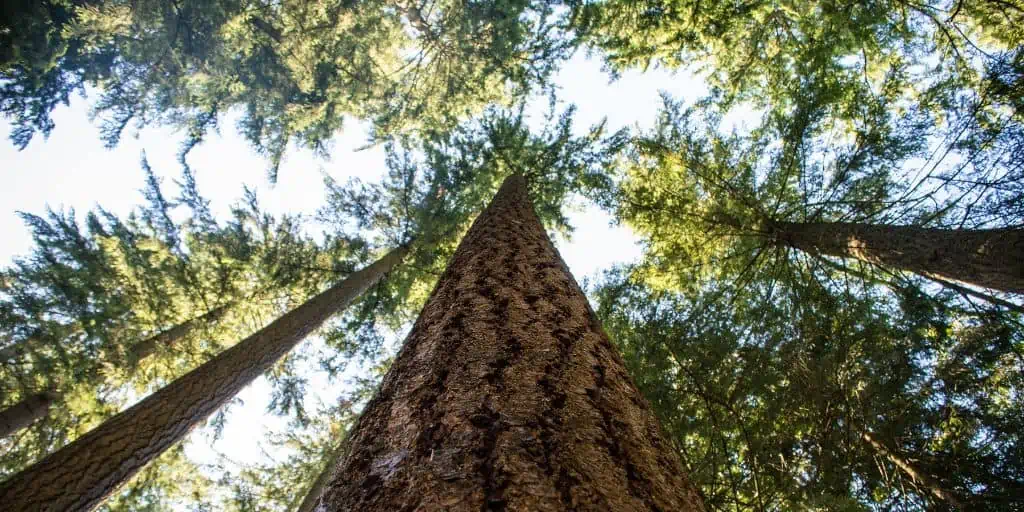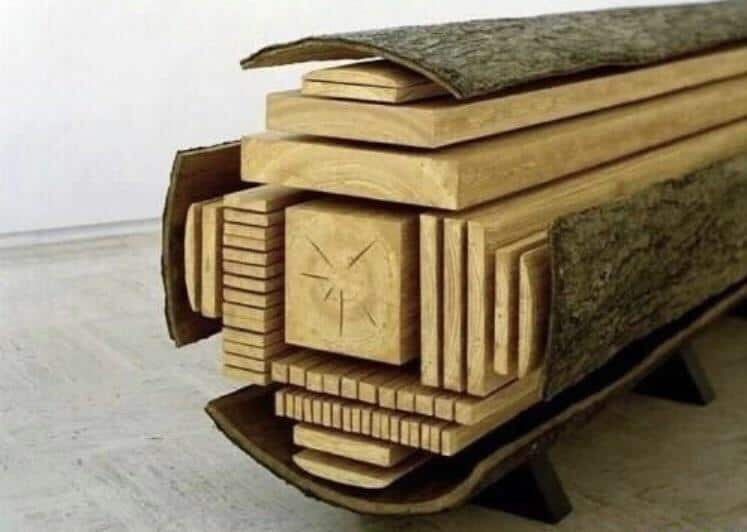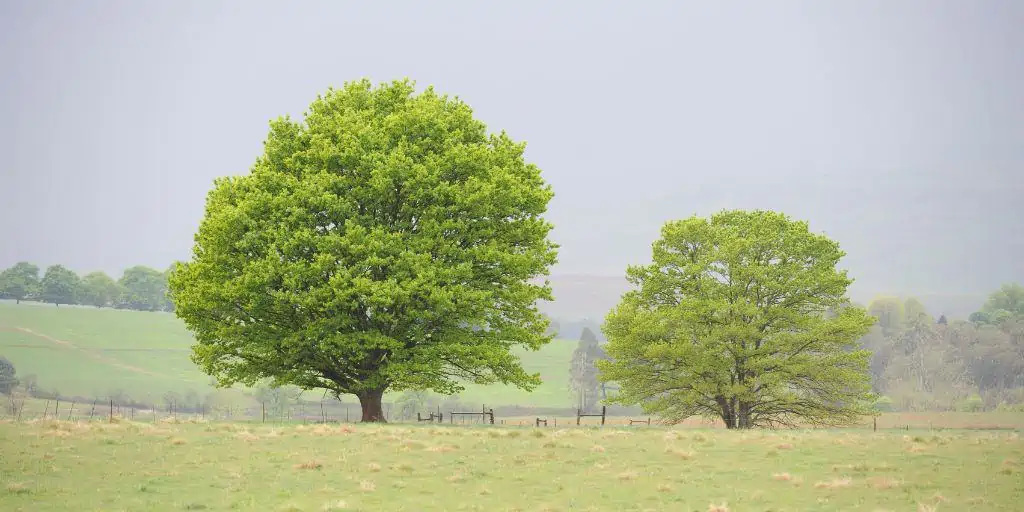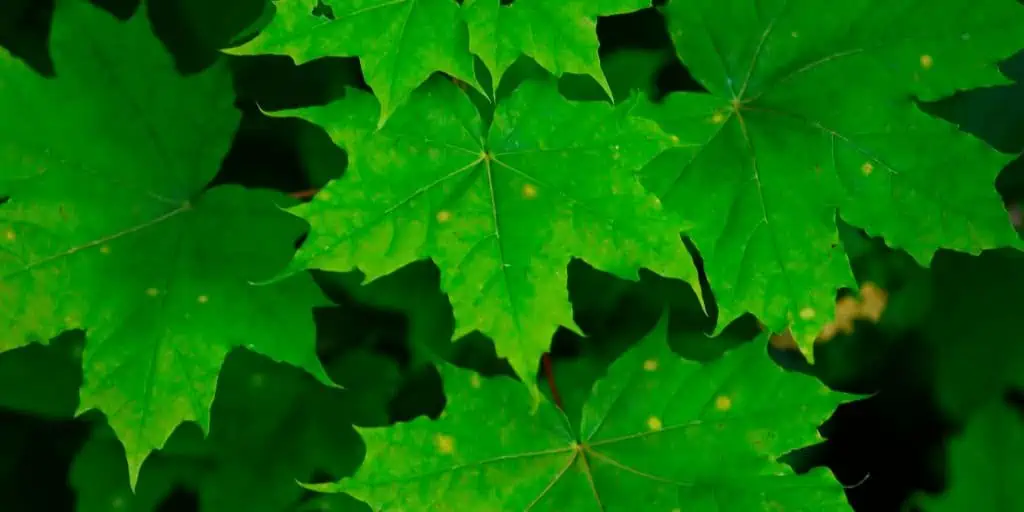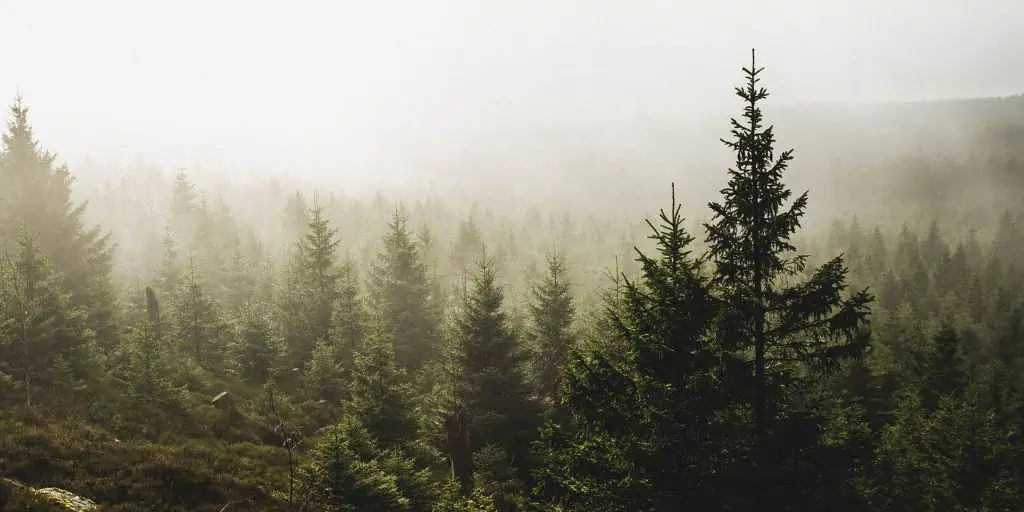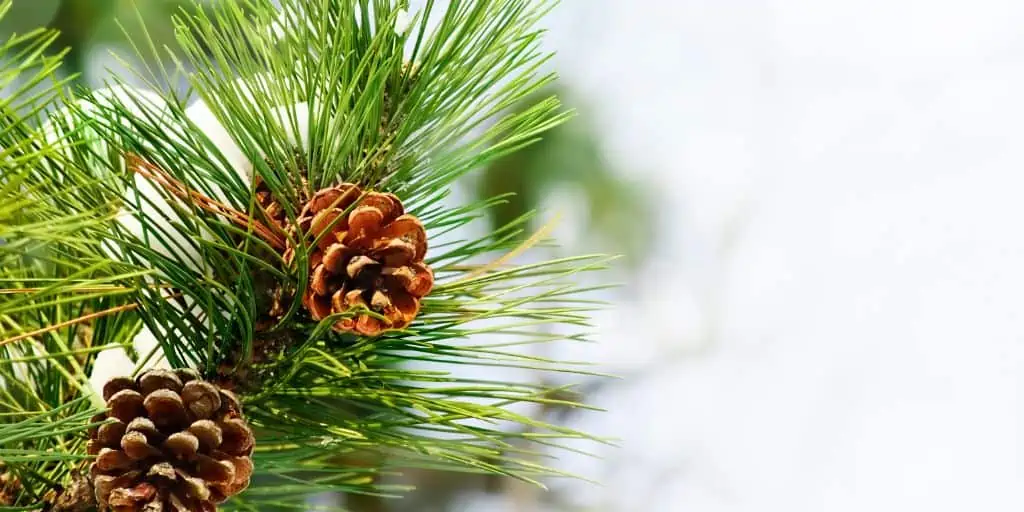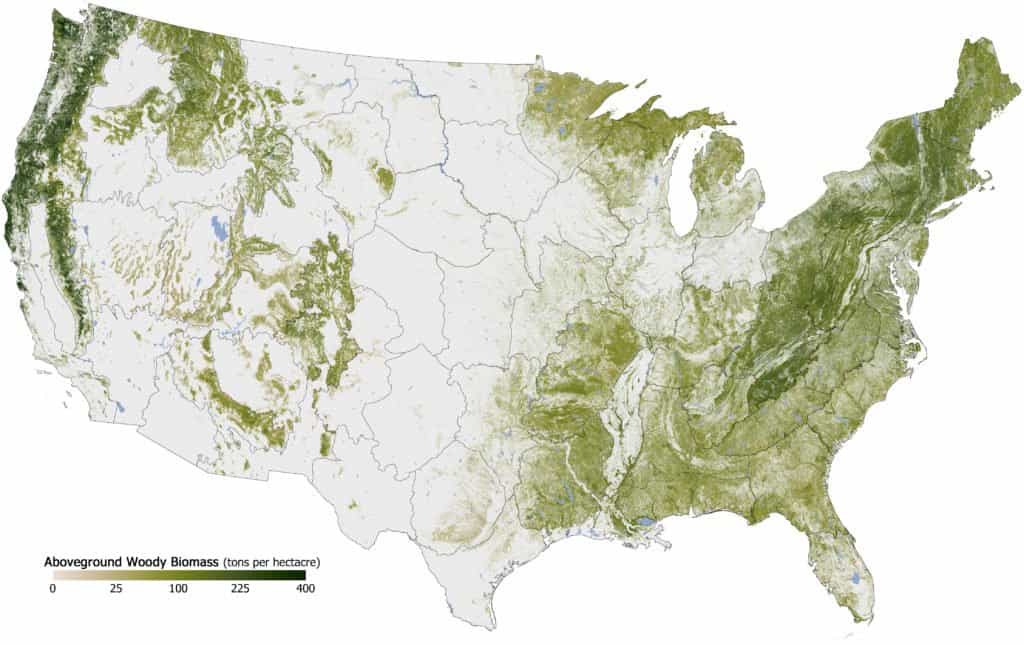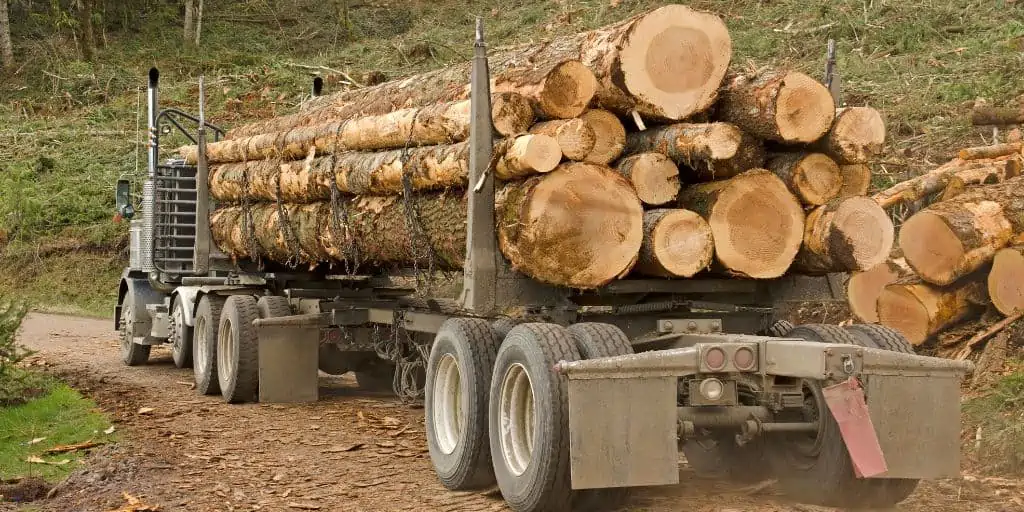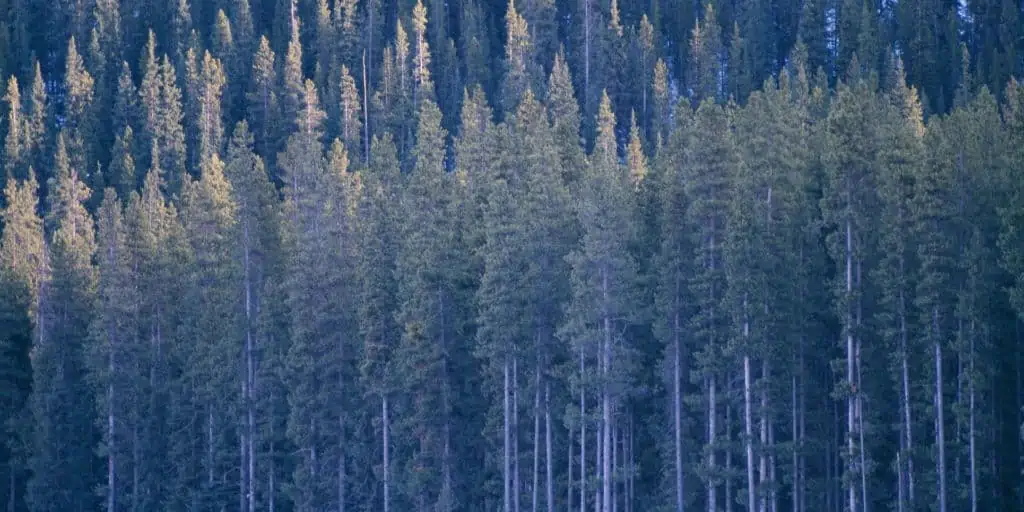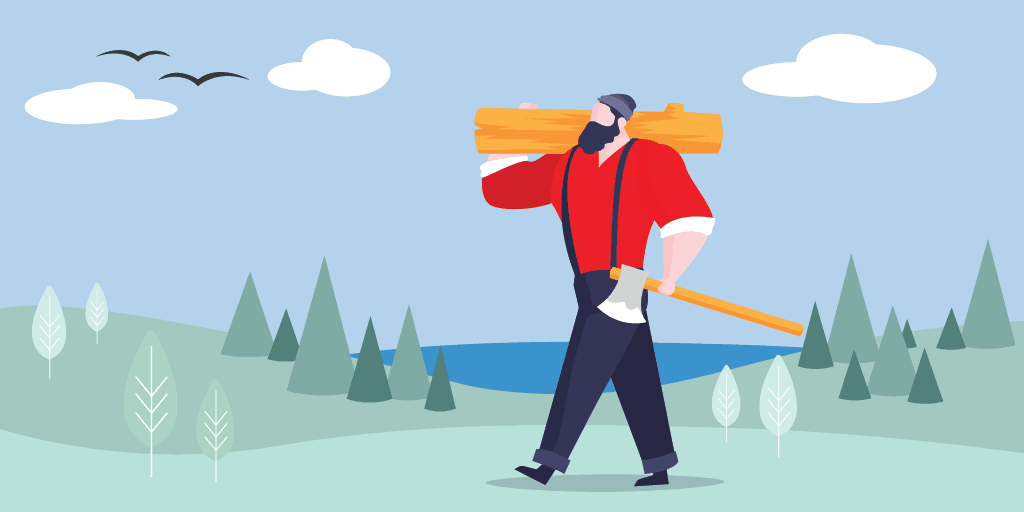
I got an email recently from a retired procurement forester.
This guy had been following the blog for quite some time, and he wanted to let me know about a land value proposition I had never mentioned before. Within the first few minutes of our conversation – I realized this guy was onto something big.
He told me about the property he lives on – a 35-acre lakefront lot, which cost him nothing. In fact, he got PAID $5,000 to take ownership.
How did he pull this off? The answer was s
Timber
As someone in the forestry profession, he had a natural eye for seeing the value of land's natural resources (something that rarely occurs to most property owners, appraisers, and assessors).
The Monetary Muscle of Timber
He had other stories from his career too. As someone whose services were regularly enlisted to appraise the value of trees, there were countless times when he had encountered the mind-blowing (and largely overlooked) value that timber has to offer landowners.
One such story was of an investor buying a large tract of land for $2 million. Unknown to the seller, this property also had timber valued at $4 million.
Do the math… after pocketing $4 million just from the trees on the property and writing a $2 million check to buy the land, the investor was left with $2 million of cash from the sale of the timber PLUS another $2 million in what was essentially free real estate equity.
This guy's net worth increased by $4 million overnight, and it didn't technically “cost” him anything!
When I started putting the pieces together – I realized we were talking about some major untapped value that wasn't even hitting the radar of most real estate investors.
How Does Timber Harvesting Work?
Most land investors know that timber can be harvested from their land, but since it's something the average person rarely does (if ever), most of us don't understand how it works. This article will cover all the essential information you'll need to know to correctly handle the timber harvesting process.
Professionals in the Timber Industry
To explain this properly, we need to understand the key players in the timber harvesting process. Let's take a quick look at each one.
Land Owner: The property owner (i.e., real estate investor) owns the land and all the trees growing on it. Assuming no other agreements have been made with outside parties, this person/entity gets to decide whether or not the timber will be sold and to whom it will be sold.
Wood Dealer / Broker: This person works as an intermediary and usually wears a few hats. Their services are often enlisted to appraise the timber (i.e., establish how much the trees are worth) and contract with a logger to take down the trees and deliver them to a sawmill where the wood will be processed.



How Is Timber Valued?
There are several variables that can have a big influence on the value of the standing timber on any property. Sometimes the value will be more than enough to justify a harvest, and sometimes it won't.
When a timber appraiser steps on a property to figure out what the ballpark value of the lumber is, there are a few key things they'll be looking at:
- Size
- Species
- Age
- Defects
- Distance
Let's take a deeper look at each one…
Size
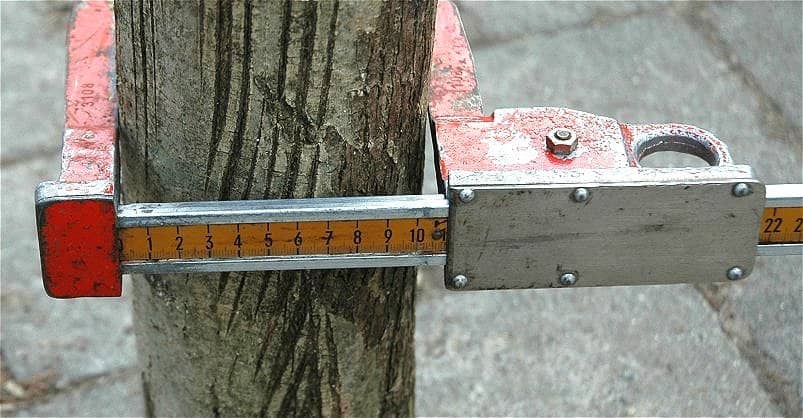
A timber appraiser will look specifically at the tree's Diameter at Breast Height (DBH), which is a standard measurement of the width of a tree at its trunk.
Depending on the end-use of the tree, the sawmill may require that it be a minimum size of 8 inches in diameter, with the top being at least 4 inches wide (as this is the minimum size needed to cut most types of construction boards).
If you're looking at a property with many small, twiggy trees, there probably won't be an abundance of value for harvesting timber. At best, the trees may be usable for paper pulp (typically the least-valuable end use).
It goes without saying that larger trees are better.
Species
The tree species can significantly impact the value of a timber harvest. Different types of trees produce different types of wood, and different types of wood have different end uses (with different market values assigned to those uses).
Wood is used for all sorts of different things, such as:
- Construction Lumber
- Telephone Poles
- Furniture
- Musical Instruments
- Paper
- Tools
- Barrels
- Fuel and Energy
- Charcoal
- Toothpicks
When determining what kinds of wood get used for these things, the decision has everything to do with the size and species of the tree. For simplicity's sake, it's easiest to separate tree types into two basic categories. Hardwoods and Softwoods.
Hardwoods
Generally speaking, hardwood is considered the “cream of the crop” in terms of value.
In most cases, “hardwood” trees have harder wood than softwood. This isn't always the case, but it usually is. As such, hardwoods tend to be more durable than softwood, which means they are ideal for certain uses that softwoods aren't well suited for.
How can you tell what type of wood is on your property? Let's cover some examples of both hardwood and softwood trees…
Examples of Hardwood Trees:
Generally speaking, hardwood trees have broad leaves and often produce flowers. Most hardwood trees are “deciduous” (meaning they shed their leaves annually). These trees have a more complex structure, and as a result, they tend to grow much slower than softwoods.
Hardwoods have a lot of important uses. This type of wood goes into things like fuel, tools, construction, boat building, furniture, musical instruments, flooring, cooking, barrels, and the manufacture of charcoal.
Softwoods
Softwood trees account for nearly 80% of the world's timber production. Most softwood trees have needles and do not have broad leaves.
Softwood trees grow much faster than hardwood trees, making them plentiful timber sources.
Examples of Softwood Trees:
Softwood is typically used for structural framing, flooring, decking, beams, poles, and paper pulp.
This video gives a good overview of the differences between hardwood and softwood trees:
Note: I realize this video was made long ago, but that's okay! Trees haven't changed much over the past few millennia, so this information doesn't need to be revised very often.
Age and Defects
In many ways, the age of a tree is closely correlated with its size and species. Certain types of trees grow faster than others, but it's usually a safe bet that when a tree is really big it's also really old.
Since the European colonization of North America, many of the largest and oldest trees in the continental United States have been logged – leaving the present-day forests with many trees that are still sizable but smaller in size than the original, virgin timber.
This map below gives a good portrayal of where most of the “above-ground woody biomass” can be found in the U.S. today.
As you can see, most of the prime areas for logging are in the Northwestern, Northeastern, and Southeastern United States.
Though the irresponsible practice of deforestation has taken its toll in North America and other parts of the world, there are still plenty of opportunities for responsible timber harvesting in these prime areas of the country. With the vastly improved forest management practices required of today's loggers, the harvesting of timber (while not necessarily “good” for the environment) doesn't have nearly the negative environmental impact it once did.
Distance from the Sawmill
Another hugely important variable in determining the potential profit from a timber harvest is the proximity (distance) of the site from the final destination of the trees – the sawmill.
So you have a densely packed property with massive hardwood trees that would sell for top dollar? That's great! But if it's located a thousand miles from the nearest sawmill, it doesn't matter.
Trees are heavy things, and the typical harvest requires a lot of machinery and manpower to transport them to the nearest sawmill. This is typically the biggest human bottleneck and obstacle to a successful (and profitable) timber harvest.
One way to find out if there's a sawmill near your property is to search for one on a sawmill locating services like Wood-Mizer or PortableSawmill.info. Granted, knowing the location of the nearest sawmill won't give you any conclusive answers as to the cost of harvesting your timber – but it's at least worth checking to get a ballpark idea on where the nearest sawmill is located.
If you hire a forestry consultant, they can offer significant help.
Does Your Property Have Valuable Timber?
Ultimately, regardless of how large your property is, where it's located, what kinds of trees are situated on it, and how big they are – the only way to know with certainty what the timber on your land is worth – ask a specialist.
How can you find a specialist to help you out? There are a few ways to do this:
- Option 1: Contact a professional forestry consultant. These experts can provide a wide variety of services (for a fee), including timber appraising and assisting with the preparation and supervision of the timber selling process. To find one of these professionals, simply do a Google search for “Foresters Consulting”, “Forestry Consultants”, “Foresters”, or even “Timberland Companies” in your area.
- Option 2: Contact your nearest State University (this is usually free or very inexpensive). In some states, you can contact a state forester with the Department of Natural Resources (DNR), Division of Forestry, or Forestry Commission. Visit the USDA Cooperative Extension System, which contains links to every state's free services, often including forestry assistance by a professional forester.
- Option 3: For a rough idea of the timber prices in your surrounding area, examine the prices for timber in your state or surrounding states through this page from the USDA.gov website. This page will show you how to reach a state forestry specialist who knows about timber prices in your market (just click on your state to find the appropriate contact information).
- Option 4: If you decide not to work with a professional forester, you can also request offers directly from local sawmills (and if you go this route, you should obtain as many offers as possible). Whichever company you hire, make sure they are bonded, know your property boundaries, follow all existing laws, know exactly which of your trees you want to be harvested, and understand your objectives for the land after the timber is harvested. Be sure to get a written timber sale contract, which is essential to all timber sales (check out this example from Michigan State University's Forestry Extension).
Keep in mind – many (but not all) local mills or loggers may have a vested interest in screwing you over.
If you choose to work without a professional forestry consultant, there is a real chance you could be taken advantage of. When a professional forestry consultant helps organize the sale, they can take an unbiased stance on the value of your timber. As a such, there is a much higher chance that you'll make profits that are in line with your local market (even after subtracting their consulting fee).
It's also worth noting that when you hire a professional's services, timber harvesting is more likely to be managed well while leaving the remaining land and forest more productive in the future.
How Much Timber Justifies Logging?
This is a complex question to answer – because it depends greatly on the size of the property, how densely it is populated with trees, the size of the trees, the types of the trees, and how closely it is situated to the mill that would be willing to harvest the timber (among other things).
In most cases, properties 20 acres and larger are ideal for logging timber (again, depending also on the quantity, size, and types of trees on the property). This is, of course, just a ballpark number. There are still plenty of cases where it's possible and worthwhile to harvest timber from smaller parcels of land – but the smaller a property gets, the more it will need to deliver in terms of its cost-to-value ratio.
Here's one way to look at it… a smaller property should have at least one of the following attributes:
- Densely packed with mature trees.
- Tree species that offer an abundance of value.
- Situated close to the sawmill.
Again, less acreage is certainly doable, but smaller parcels will be limited in how much value can be extracted without one or more of these attributes.
What Happens to the Trees?
To those concerned about the environmental impact of logging, it should be noted that cutting down trees DOES impact the environment. However, it should also be noted that over the past century, logging tactics had become much more environmentally responsible than when the early settlers first came to North America.
In areas where an ongoing forest is still desired, timber is harvested in such a way that leaves plenty of smaller trees and growth on the land, allowing the forest to regrow and repopulate in a much shorter span of time.
These two videos from Vaagen Brother's Lumber give a fascinating look at the timber harvesting process from start to finish.
As you may have noticed from this first video, the loggers don't butcher every living thing from the land. It's a process known as “selective harvesting”, where only the most substantial and valuable trees are harvested, while the smaller trees are left to repopulate the forest over the coming decades.
And in case you were curious about what happens once they get to the mill, check out this video…
I found it interesting that every last part of these trees is put to good use, with the goal of 0% waste. As you can probably tell from all the heavy machinery involved, it's not cheap.
Harvesting timber, transporting it to a sawmill, and turning it into the final product is expensive! Given the costs involved, it only makes sense for a sawmill to utilize every last part of each tree that comes through its doors (and that's exactly what they'll do).
The Big Idea
If you take away nothing else from this article, I hope that you'll understand one simple thing.
Land has MANY potential uses. Many of us are stuck with the idea that the only real value is living on the property, but it can go further beyond that. When you fully understand what a property's natural resources have to offer (e.g., trees growing on it or minerals buried beneath the surface), you could strike gold – even when the rest of the world has no idea what they're looking at.
If you can think outside the box, you may find that these natural resources hold a TON of hidden value – in some cases, it could be enough to pay for your holding costs; other times, it may be even enough to multiply the value of your investment many times over.
Even if you choose not to harvest the natural resources on your property, simply being aware of what's there can be a tremendous selling incentive that makes your property appear FAR more valuable to potential buyers. When you understand what your property has to offer, your selling efforts will be MUCH easier than they are for other property sellers who didn't understand the facts.





